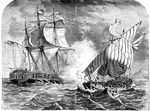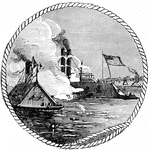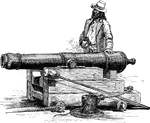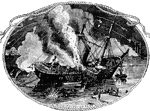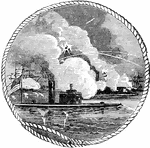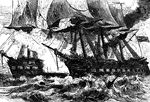Clipart tagged: ‘naval battle’

Acquia Creek
"The attack upon the batteries at the entrance of Acquia Creek, Potomac River, by the United States…

The Consititution Capturing the Cyane and Levant
The Constitution engaging two British ships, the Cyane and Levant.

First naval battle
"First naval battle in Hampton Roads between the Confederate iron-plated steamers Merrimac, Yorktown,…

Kearsarge Sinking the Alabama
The sinking of the Alabama by the Union Kearsarge. Some Confederates aboard the Alabama escaped to England…

Opening of the Battle of Mobile Bay
The Battle of Mobile Bay was a naval battle fought on August 5, 1864, during the American Civil War.

Capture of Fort Morgan, Mobile Bay
The Siege of Fort Morgan occurred during the American Civil War as part of the battle for Mobile Bay…
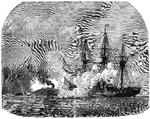
Mobile Harbor
"Farragut's naval victory in Mobile Harbor. The Hartford engaging the Confederate ram Tennessee.…
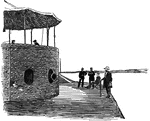
Monitor
Navy soldiers on the deck of the Monitor, a warship famous for the battle with the Merrimac.

Second Naval Battle
"Second naval battle in Hampton Roads- fight between the Federal ironclad Monitor, of two guns,…

Action between the Weehawken and Confederate Iron-clad Atlanta
Naval battle between the Union Weehawken and Confederate Atlanta.
